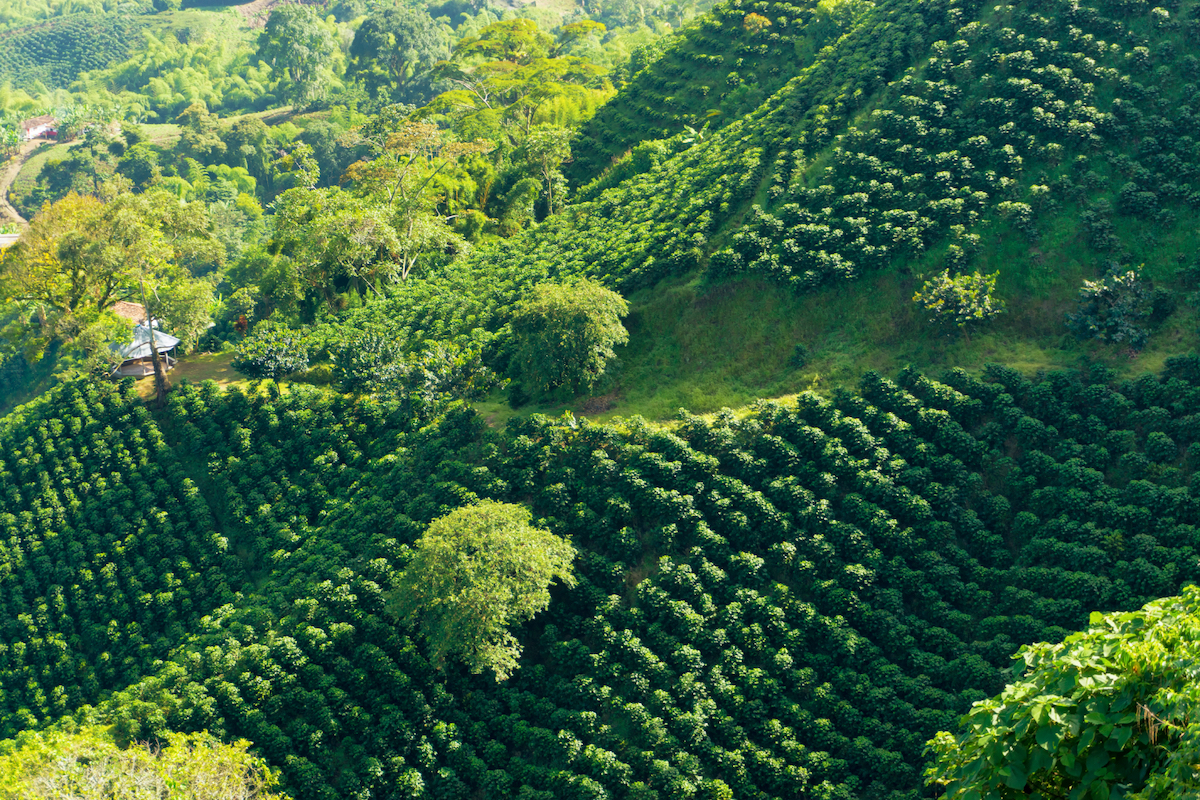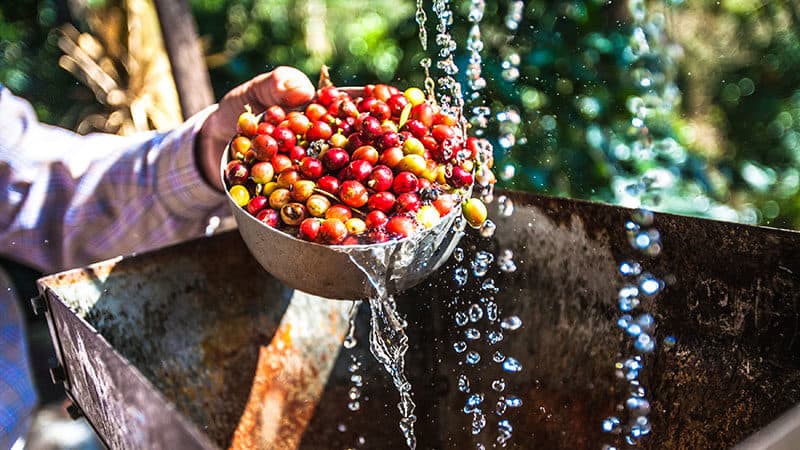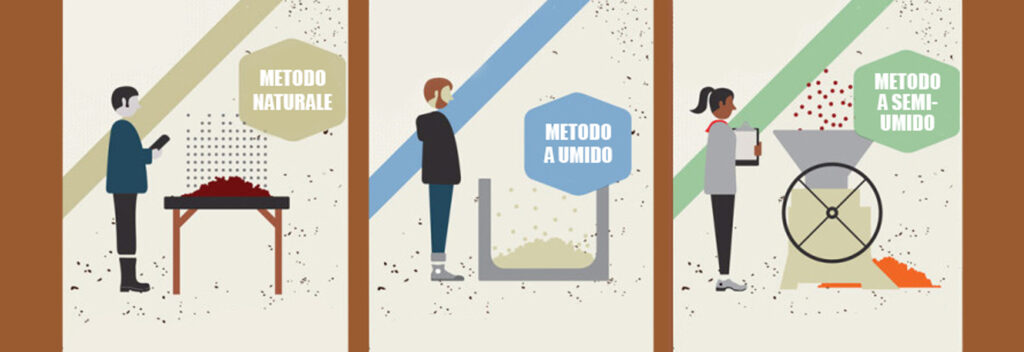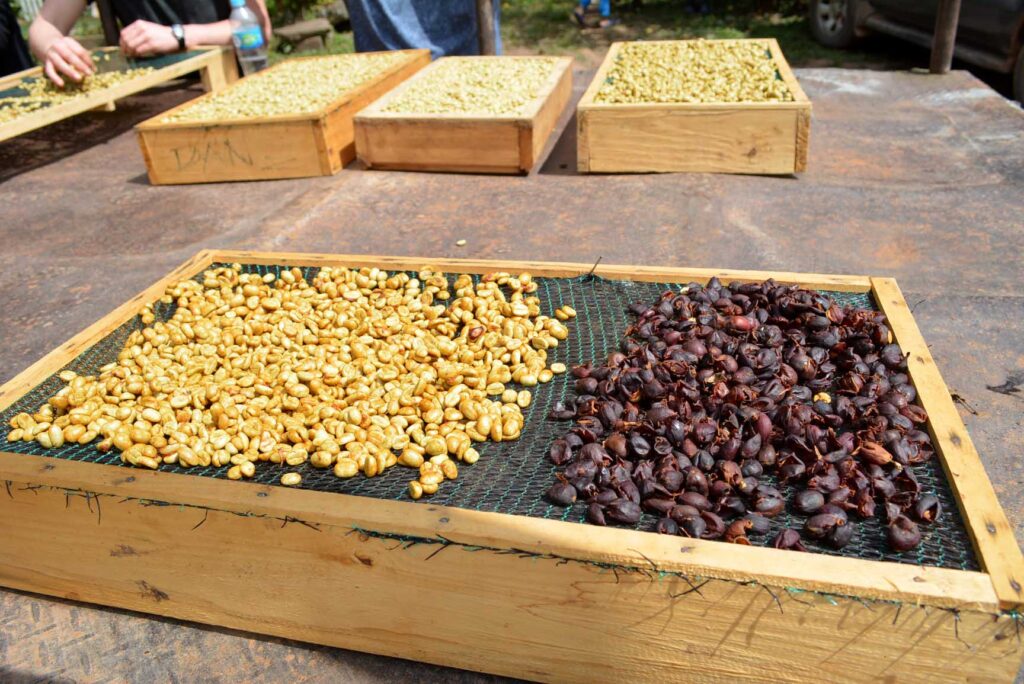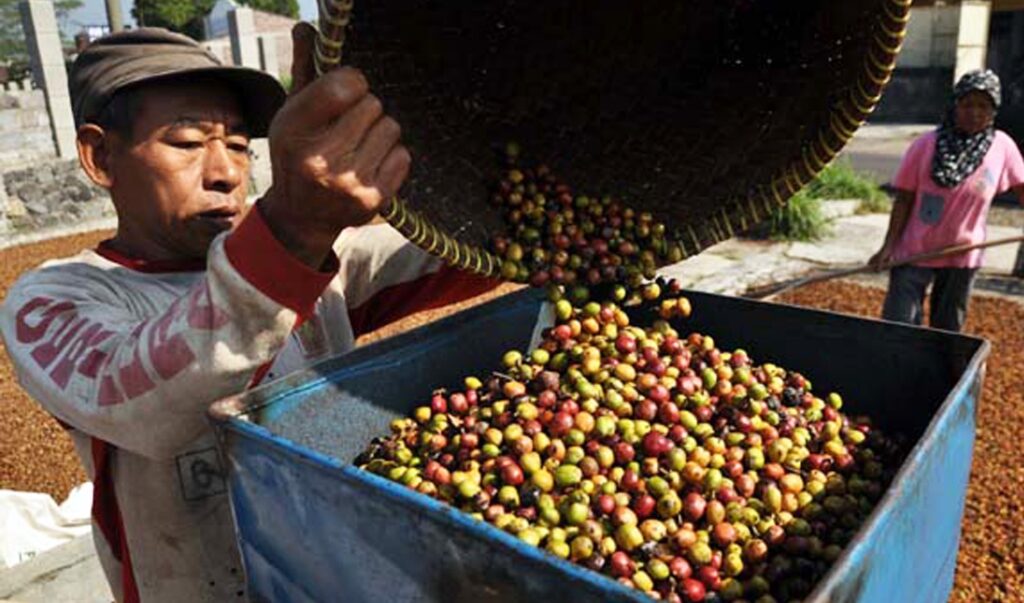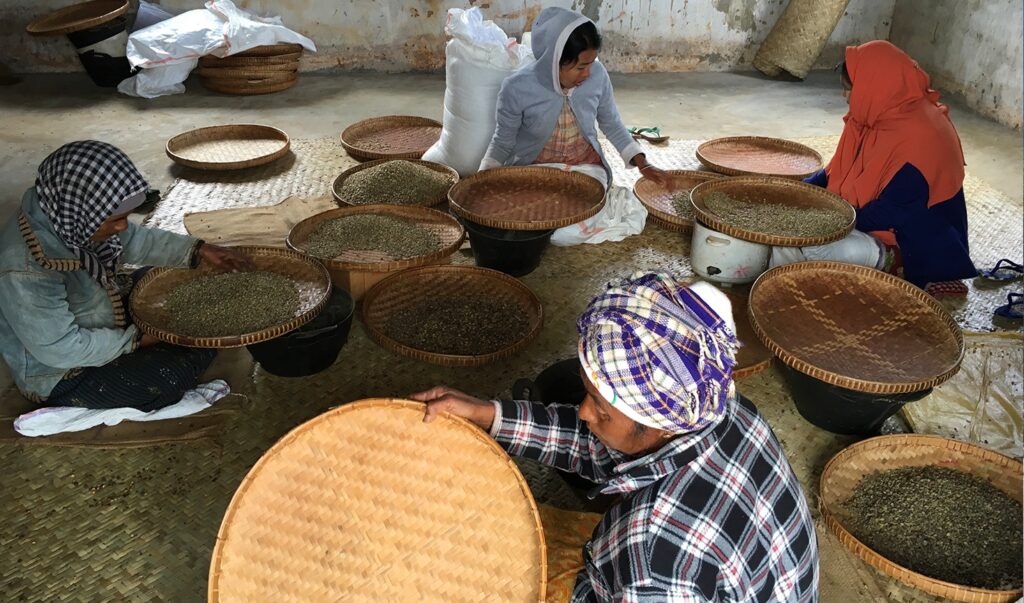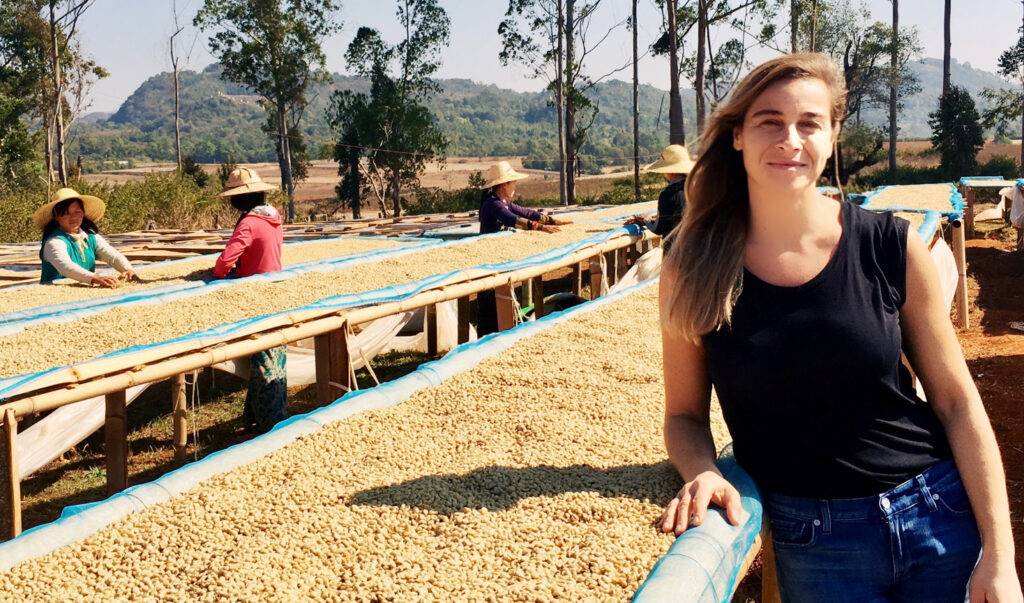What is the best coffee?
When someone asks me which coffee is the best coffee, I like to reply with a smile: “it’s what each of us like to drink”. But, if the person that asked the question instead was eager to investigate the topic of what really is the best coffee in the world, then I would respond more or less like this: “Coffee is just like wine, it’s hard to say that one is absolutely the best amongst all, but certainly it can be said that a very good one can be obtained from distinct species and botanical variety that is cultivated and grown in a specific region of the globe, where unique topographical microclimatic conditions are found.
However, the quality of a coffee also depends on many other factors, including those that are strongly linked to the identity of the territory, the processing procedures applied according to different traditional methods, and the more or less advanced agricultural practices used”. If I continued in the explanation, I would also add that the basic prerequisites to obtain optimal quality would also be those for which the coffee must be well stored, well roasted, well packaged, freshly grounded and carefully prepared in the cup but at this point, most likely my interlocutor would have … already fallen asleep!
From the field to the cup, the path in fact is very long, it cannot be approached in a quick way, as instead an espresso is generally consumed. Coffee is the cornerstone of human relationships, we can talk about it in episodes as I am sure that facing one aspect at the time my audience will not be bored and I hope not even you!
From the flower to cup
Today I want to talk about the steps of coffee processing as they play a crucial role in obtaining the final quality of our cup. Before I begin however, I think it is better to explain some fundamental points in order to better understand the following paragraphs. In fact, coffee is not a seed, but is a drupe (drupes are seeds that are incased in an internal shell) that grows on the branches of a small shrub.
In their native country the coffee trees bloom once, even twice a year in some equatorial countries. The flowers are white and full of perfume, they last two or three days in all their beauty and adorn of wreaths each knot of the branches of this enchanting tree. The flowers are soon replaced by green berries which then become yellow and then red, very similar to cherries.
Under the casing there are almost always two of those seeds called beans. Once harvested, the cherries are subject to a particular process in order to separate them from the seeds contained inside. Once the coffee is freed from the cherry, it is dried in the sun and subsequently worked again to remove an additional layer called Parchine that protects the seeds.
Prior to be exported the green grains are selected; the imperfect and defective ones are removed. Once they reach the countries where they will be consumed, the beans are toasted and delivered to bars and cafes to finally land inside your cups!
The methods of coffee processing
In general, the two methods used to process the coffee cherries are the dry and the wet method from which the so called natural coffees and washed coffees are obtained, respectively. In particulars, up to a few decades ago, the ‘special’ coffee sector (specialty coffees) was the prerogative of washed coffees.
Only in recent years new methods of processing have become more and more popular so to earn a place among the ‘specialty” even to some coffees processed with the natural method. Of these methods we will talk shortly. In addition to the first two methods that I have already mentioned, since the end of the 90’s in the coffee producing countries we have also began to employ an intermediary method that is very used today: the so called semi-washed method.
Many producers especially in Latin America refer to this method as “honey” process. Therefore, generally speaking we can say that even if countless ways of processing the coffee cherries have been developed, they fall into three main categories: natural (dry), washed (wet) and honey (semi-moist).
The Natural Method
The most ancient and traditional method of processing the cherries is the natural, also called the dry method. This method consists in placing the just harvested cherries on a “concreted patio’ to dry.
The cherries are laid over sheets of suitable material or on metallic nets raised from the ground exposed to the sun. When the cherries have reached the correct level of humidity they are passed through machines that will remove all the layers of the fruit that cover the seeds. Finally the seeds are passed through a series of special sieves that will determine the classification by thickness and shape and therefore their value.
If in the past coffees that were processed by natural method were considered of low quality, today many of the coffee belonging to the “specialty coffees” category are processed with this method, this is due to the fact that the seed absorbs from the fruit -skin and pulp- all those substances that make coffee sweeter and of a more intense flavor with fruity notes such as blackberry or raisins.
At the same time, with this process the coffee retains lower acidity content and a more dense body than the washed coffees. Although the manufacturer should be very careful during this process in order to avoid compromising the quality of the coffee, this method is easier to undertake both from an economic stand point and in areas where the climatic temperatures are higher and are more pones to droughts.
The Wet Method
Wet processing takes place in special washing stations, this is the process traditionally used in Latin America and in some African countries. It consists in immersing the freshly harvested cherries in water in order to separate the ripe ones from the unripe ones. The later ones are then removed. The ripe ones are conveyed into machines that remove the outer layers of the cherry, the peel and the pulp.
An additional layer of the coating, more sticky and sugary called mucilage, is eliminated through the fermentation phase. In other words to free the seed from the mucilage the coffee is deposited in large tubs and left to ferment, up to 8 to 72 hours, depending mainly on the climatic conditions where the process occurs. After this process the beans are rinsed again and finally they are placed to dry under the sun on concrete patios or on nets suspended from the ground.
Following these steps, the commercial characteristics of the coffee can be improved in order to demand a higher selling price by an operation known as “brillatura“, blasting. Unlike natural coffees, the washed ones have a more pronounced acidity level while the taste to the palate of the beverage as described by the experts is more clean, uniform, elegant and well balanced. Although they still possess sweetness, the washed coffees have a medium body and an excellent complexity of aromas reminiscent of cocoa, citrus fruits and delicate flowery notes.
The Semi-humid Method
The method of the semi-washed is a process that has become really popular in the last decades because it is believed that with this method it is possible to combine the best aspects of both processes “the natural” and “the washed”. In fact once the peel and the pulp of the cherry are mechanically removed the seeds are placed directly to dry on the patio.
Recently the producers have begun to experiment with different techniques to perform this type of process that they like to refer to it as “honey process“, according to which once the peel is removed, the coffee is spread out in the sun to dry with different layers of pulp and mucilage still on the cherry.
Depending on the amount of pulp and mucilage left on the cherry placed under the sun, this step requires a great deal of knowledge and experience to control the whole operation, the coffee will develop different colors as well as different flavors, the producers for this reason will label their product in the versions of ” Yellow”, “Red” or “Black” honey coffee.
In general, the viscous substance attached to the seeds during the drying phase makes it possible to obtain a coffee with the most pronounced sweetness and the most marked body. As far as the taste and the aromatic notes are concerned, the greater level of mucilage left attached to the seed, in the case of the “Black Honey“, the more the coffee will have the aromatic notes similar to the natural processed coffees, with lower acidity and a more pronounced body, or a pleasant taste, lighter, similar to certain washed coffees if a larger layer of the mucilage that covers the grain is removed as in the case of the “Yellow Honey“.
Different methods in different regions
Country you go, tradition you find. In historical terms, in fact, several countries and regions of the world for decades have been using only one method to process the cherries, the fruit of the customs and traditions of those places of production. Even today, in many producing countries, the same systems are used to produce the larger quantity of coffee at a world level, natural or washed.
However this state of affairs is slowly changing because today the incessant demand for new products with different flavors by increasingly demanding consumers has prompted producers to align themselves with the market demands. A case on all is that of Brazil, historically producer of natural coffees that nowadays is instead continuously trying new techniques to process coffee with the Honey method.
Other coffee producers have taken a step further, beginning to experiment with completely new processes that do without fermentation or that employ carbon dioxide during this phase of process, in this case we talk about carbonic maceration through which it seems that the coffee acquires a distinctive flavor of…..BUBBLEGUM!
Others look at yeasts to accelerate the fermentation of the grains, while a producer I recently visited in Brazil is conducting experiments with “Honey Water“, a coffee that should develop sensory characteristics similar to the semi-washed but have an aromatic complexity closer to a natural coffee. To cite another very special method, I think it is interesting to describe also what is widely used by small coffee producers in the island of Sumatra and Sulawesi.
Through this method the Parchine, the last and most tough layer that protects the seeds, is removed when the grins are semi-moist. The grains are then immersed and let to ferment in tubs, buckets, plastic containers or tanks or whatever you have at your disposal. After this step the beans are washed with water to remove residues of mucilage and then placed under the sun to dry for about two to three days until the level of humidity has reached about 20%. From this moment the producers sell the still damp beans to the intermediaries, who immediately remove the parchine with special machines and let the beans dry completely in the sun.
A very special coffee
Of course I would have to tell you about other coffees processed with very special methods, such as the Indian coffee Monsonato or the well-known Kopi Luwak; however I would risk to find you really asleep – unless you are already asleep!. However I cannot conclude my list without first mentioning the most sensational one, related to the most expensive coffee in the world: the Black Ivory produced in Thailand. Similar to the Indonesian Zibetto it is obtained from the seeds of Arabica that are ingested by elephants and then recovered in their stool.
The cherries pass through the digestive system of the animals whose enzymes decompose part of the proteins of the coffee, giving a bitter and exquisite taste! I have read somewhere that it costs the beauty of $1100.00 per Kilo because to produce a kg of finished product are needed 33kg of coffee beans. It is spontaneous for a coffee lover to make a joke about it (I never tried it in my life), the positive think about this is that at least 8% of the revenue from the sale of this coffee is donated to preserve and protect the elephants in the district of Chiang Saen.
New techniques for a better future?
Of all the methods to process the coffee cherries we have mentioned, we can definitely say it is worth taking in account only a few of them, while some are on the way of experimentation and other still arouse some doubts.
However, as the industry continues to evolve quickly, coffee is increasingly linked to different forms of process that develop completely new flavors that allow producers to market their coffee among the “special” achieving this way better profit margins by obtaining a higher and probably fairer price, giving way to a virtuous circle made by new investments for farming and production and most of all a more elevated standard of living for the families of the local workers.
Ilaria Danesi






